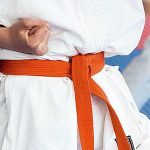Karate is often portrayed as a powerful and empowering martial art, but beneath its flashy moves and impressive displays of strength lies a hidden danger. As someone who has dedicated years to practicing karate, I have witnessed firsthand the potential risks involved in this popular sport. From broken bones to concussions, the dangers of karate are not to be taken lightly.
According to a study by the American Journal of Sports Medicine, there were over 6,000 reported karate-related injuries in just one year. This alarming statistic highlights the importance of understanding and acknowledging the potential risks before diving into this physically demanding activity. So before you tie on that black belt and step onto the mat, let’s explore some key points to keep in mind.
While high impact moves like kicks and punches may look impressive, they can also cause serious injuries if not executed properly. Furthermore, lack of proper training and supervision can lead to accidents that could have been avoided with proper guidance.
One of the most concerning dangers of karate is repeated blows to the head. These can result in long-term brain damage, which can have lasting effects on one’s health and well-being. Additionally, due to the intense stretching and twisting movements involved in karate, joint injuries are common among practitioners.
Even with protective gear such as helmets and pads, there is still a risk of injury while practicing karate. While these precautions may minimize harm, they do not eliminate it entirely.
Now don’t get me wrong – I am a huge advocate for karate and all its benefits. However, it is crucial to be aware of these potential dangers and take necessary precautions to ensure your safety while practicing this sport. In my upcoming blog post, we will dive deeper into these risks and discuss ways to avoid them. So stay tuned.
How dangerous is Karate?
Karate, like any physical activity, carries certain potential risks and injuries. However, with proper precautions and awareness, these can be minimized. It is important to note that Karate can be expensive, especially if you participate in tournaments. To mitigate this, consider finding a more affordable dojo or limiting your tournament involvement.
Injuries are another concern, even for careful practitioners. To prevent them, it is crucial to follow instructions, take things slow, and properly warm-up and stretch before training. Additionally, Karate can be physically and mentally taxing, leading to fatigue and burnout. To avoid this, listen to your body, take breaks when needed, and prioritize rest and recovery.
One aspect of Karate that can be demanding is the time commitment. Unlike other sports with designated off-seasons, Karate requires continuous training. To manage this, create a realistic training schedule that allows for other important aspects of your life.
Moreover, in the wrong hands, Karate can be used for violent behavior. To prevent this, emphasize the importance of discipline and respect in training and discourage any aggressive behavior. Additionally, situational awareness teaching in Karate is limited, which could hinder self-defense skills outside of the dojo. To supplement this training, consider learning other self-defense techniques that focus on situational awareness.
Another potential drawback of practicing Karate is missing out on other opportunities due to time constraints. It is essential to find a balance between training and other important aspects of your life to avoid feeling isolated or limited.
Lastly, practicing Karate may limit social activities and interactions. To counter this, make an effort to maintain social connections outside of your dojo.
Is Karate dangerous to others?
Karate is an incredible and energetic martial art that has been practiced for centuries. It incorporates a variety of striking, kicking, and defensive techniques that require discipline, strength, and focus. While it provides numerous physical and mental benefits, it is not without its risks and potential dangers that must be recognized and managed to ensure the safety of all.
The potential hazards associated with practicing Karate include:
- Injuries: As with any physical activity, there is always a risk of injury when practicing Karate. Common injuries include sprains, strains, fractures, and bruises. These can occur due to improper technique, overexertion, or inadequate warm-up. To mitigate these risks, it is crucial to select a reputable instructor who prioritizes proper technique and safety guidelines. Additionally, regularly evaluating potential risks and listening to your body can help prevent injuries.
- Concussions: Karate involves striking techniques that can potentially result in head injuries if not performed carefully. To minimize this risk, it is important to wear protective gear such as headgear and mouthguards during sparring or contact drills.
- Overuse injuries: The repetitive movements in Karate can lead to overuse injuries such as tendonitis or stress fractures. To prevent these injuries, it is essential to maintain good physical conditioning and be mindful of your body’s limitations. Taking breaks and varying your training can also help prevent overuse injuries.
- Equipment-related injuries: The use of weapons and training equipment in Karate carries its own set of risks. It is crucial to use high-quality equipment that is properly maintained and inspected regularly to avoid accidents.
To ensure the safety of others while practicing Karate, it is necessary to take necessary precautions such as:
- Choosing a reputable instructor who prioritizes safety and proper technique.
- Utilizing protective gear such as headgear, mouthguards, and gloves during sparring or contact drills.
- Regularly assessing potential risks and being mindful of your body’s limitations.
- Maintaining good physical conditioning through adequate warm-ups and training.
- Using high-quality and properly maintained equipment.
Although Karate does carry certain risks and dangers, they can be minimized through proper precautions and practices.
How to practice Karate safely
Karate is a form of martial arts that involves physical movement and contact, making it crucial to practice safely to prevent injuries. Here are some important safety measures to keep in mind when practicing Karate:
Get a medical evaluation
Before starting any physical activity, it is essential to consult with a doctor and receive a physical evaluation. This will help identify any pre-existing conditions or injuries that may need to be addressed before practicing Karate.
Warm-up and stretch
Properly warming up and stretching before every training session can help prevent muscle tears and other injuries. This prepares the body for physical activity and should not be skipped.
Wear appropriate gear
Wearing the correct equipment, such as helmets, mouth guards, and gloves, can provide protection against potential injuries during training or sparring. It is important to ensure that all gear fits properly and is in good condition.
Train in a safe environment
Practicing Karate in a safe and suitable environment is crucial. This means having enough space to move around without obstacles and using proper flooring to prevent slipping or falling.
Be aware of your body
Knowing your own strength and limitations is key in preventing injury while practicing Karate. Listen to your body and avoid pushing yourself too hard.
Use minimal force while sparring
Sparring with a partner carries some risk, especially for beginners. To minimize the risk of injury, use minimal force and approach sparring with caution.
By following these safety measures and responsibly practicing Karate, you can greatly reduce the risk of injury and fully enjoy all the benefits this martial art has to offer.
Final thoughts
Ensuring your safety while practicing karate requires a multi-faceted approach. First and foremost, it is imperative to cultivate a robust safety culture within your organization or training setting. This entails fostering an environment where everyone looks out for one another and is quick to address any unsafe behaviors among colleagues or fellow students.
Moreover, it is crucial for management to lead by example and involve employees or students in developing safety policies. Providing comprehensive training on safe practices and regularly communicating about safety initiatives can also contribute to a strong safety culture.
In addition, conducting regular inspections and promptly addressing any hazards, as well as promoting open communication about safety concerns, can help prevent injuries during karate practice.
Furthermore, recognizing and rewarding safe behavior, holding individuals accountable for unsafe actions, and continuously evaluating and improving safety protocols are vital steps in ensuring the safety of everyone involved in karate practice. Regularly reviewing and updating safety procedures to align with industry standards is also essential.
Conclusion
In conclusion, while karate may appear to be a formidable and empowering form of martial arts, it is not without its potential dangers. According to the American Journal of Sports Medicine, there were over 6,000 reported injuries related to karate in just one year. From broken bones to concussions, the physical nature of this sport can lead to serious accidents. Moreover, repeated blows to the head can result in long-term brain damage, even with protective gear.
It is crucial for practitioners to take necessary precautions such as getting a medical evaluation before starting training, properly warming up and stretching, wearing appropriate gear during practice, and being mindful of their physical limitations.
Additionally, minimal force should be used during sparring to avoid unnecessary injuries.
However, safety measures should not only be the responsibility of individual practitioners but also that of organizations and instructors. A strong safety culture should be cultivated through open communication among all members involved in karate practice. Regular inspections and prompt addressing of hazards are also essential in creating a safe environment for training.
By prioritizing safety in karate practice, we can continue to reap its physical and mental benefits without putting ourselves or others at risk. Let us remember that while karate may involve combat and aggression, it is ultimately about discipline and respect for oneself and others.






